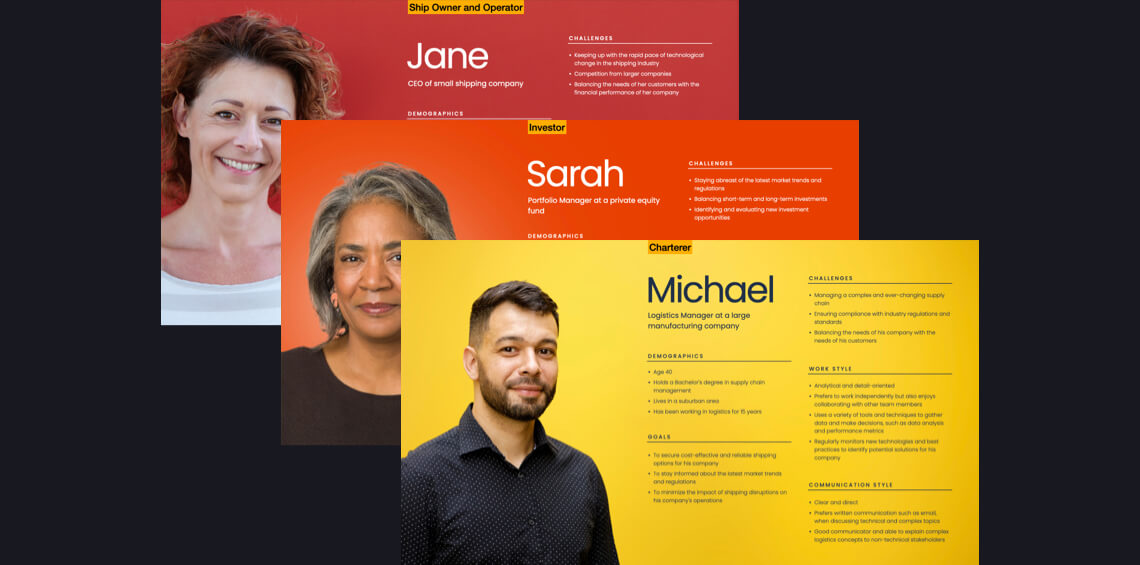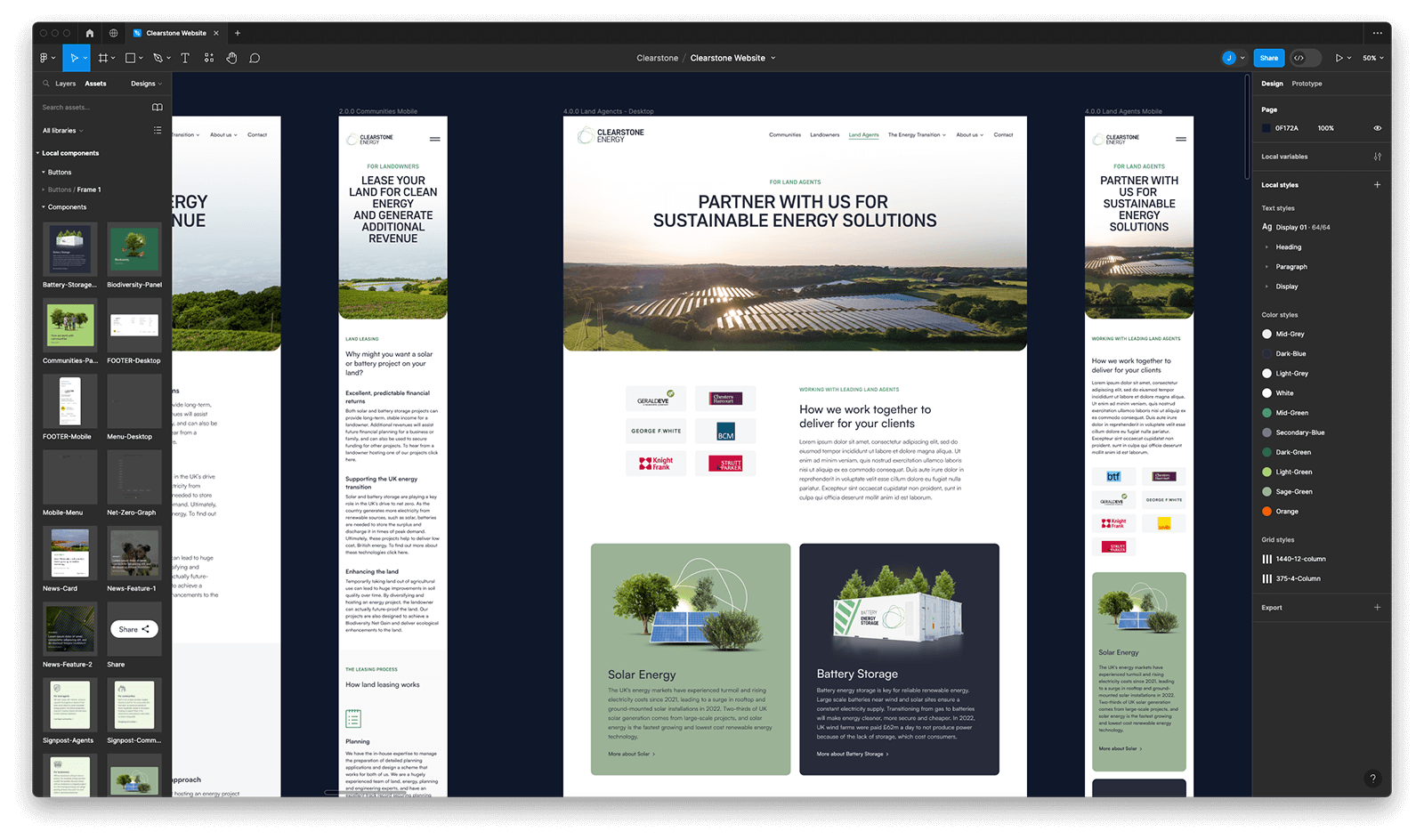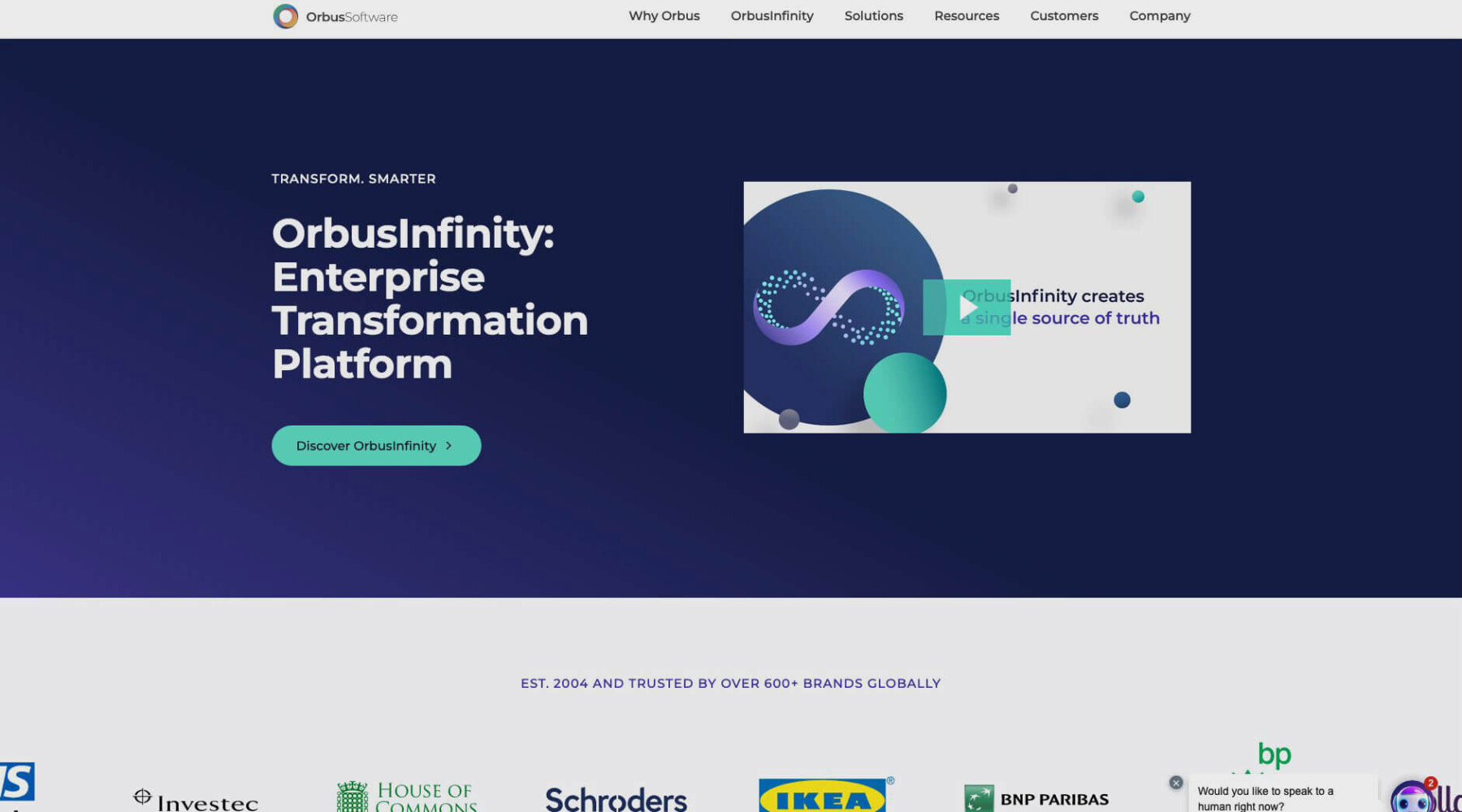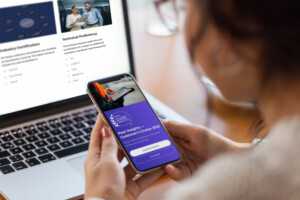
The Power of User-Centric Web Design
Table of Contents
TLDR
This article explores user-centric web design, emphasising its crucial role in successful websites.
It covers user-centric design principles, such as usability, accessibility, and empathy, and guides on implementing these principles effectively.
Challenges like balancing user preferences and business goals are addressed, alongside real-life case studies demonstrating the transformative power of this approach.
The article discusses future trends like AI and voice user interfaces, underscoring the continuous evolution of user-centric design and its growing importance in creating engaging, effective, and accessible websites.
The key to successful engagement
Websites are the gateways to our businesses, ideas, and interactions, the significance of user-centric web design has never been more paramount. This design philosophy, which places the user at the forefront of the web development process, has revolutionized how we create and interact with websites. It’s not just a trend that’s catching on; it’s a fundamental approach that’s reshaping the online landscape, determining the success and failure of digital platforms.
Gone are the days when web design was solely about aesthetic appeal or showcasing the latest technology. Today, the effectiveness of a website is measured by how well it resonates with its users, how seamlessly it navigates, and how effortlessly it delivers solutions to the user’s needs. User-centric design isn’t just about making websites look good; it’s about making them feel right in the hands of the user.
In this exploration of user-centric web design, we’ll delve into why this approach is not just beneficial but essential for the success of any website. From enhancing user engagement to boosting conversion rates, the user-centric design stands as a pillar of effective digital strategy. We’ll uncover the principles that make this approach tick and guide you through the practical steps to implement it in your web projects. Whether you’re a seasoned designer, a business owner, or just curious about the digital world, understanding the essence of user-centric design is key to thriving in this ever-evolving online arena.
Understanding User-Centric Web Design
User-centric web design is a concept that has fundamentally shifted the approach to creating websites. At its core, it involves designing websites with the end-user’s experience as the primary focus. This means prioritising the needs, preferences, and behaviours of the website’s audience above all else.
Historically, web design was largely driven by the desires of the business or the creativity of the designer, often leading to visually impressive but user-unfriendly sites. Over time, however, it became clear that a website’s success isn’t just about its visual appeal or the sophistication of its technology, but about how well it serves its users. As the internet has become more integral to our daily lives, the shift towards user-centric design has become a necessity rather than a choice.
This evolution towards user-centricity in web design didn’t happen overnight. It was driven by a growing understanding that the most successful websites were those that delivered the best user experience. This meant easy navigation, fast load times, accessible content, and a design that intuitively led users to take desired actions, whether that’s making a purchase, signing up for a newsletter, or simply finding information quickly and easily.
The rise of mobile internet usage has further propelled this shift. With users accessing websites from a variety of devices with different screen sizes and capabilities, the need for adaptable, user-friendly design became even more pronounced.
User-centric web design is also supported by research and data analysis. Design decisions are increasingly driven by user behaviour data, usability tests, and other forms of research to ensure that the end product truly resonates with its intended audience.
In essence, user-centric web design marks a transition from a ‘business-first’ to a ‘user-first’ mentality. It recognises that the ultimate measure of a website’s success is how effectively it meets the needs of its users, and it uses this principle as the guiding force in every aspect of design and development. This approach not only improves the user experience but also contributes significantly to achieving the website’s business goals, such as increased engagement, higher conversion rates, and customer loyalty.
Why User-Centric Design is Crucial for Website Success
The importance of user-centric design in determining a website’s success cannot be understated. This approach directly influences user engagement, satisfaction, and ultimately, the conversion rates that are crucial for any online venture. Let’s delve into the reasons why adopting a user-centric mindset is indispensable for a website’s triumph.
Enhancing User Engagement
Websites designed with the user in mind typically boast higher engagement levels. When users feel that a website caters to their needs and preferences, they’re more likely to spend time exploring it. Features such as intuitive navigation, fast loading times, and responsive design ensure that users have a smooth and enjoyable experience, which encourages them to engage more deeply with the content.
Improving Conversion Rates
The primary goal of most websites is to convert visitors into customers or followers. User-centric design directly contributes to this by simplifying the journey towards the desired action, be it making a purchase or signing up for a newsletter. By removing barriers and streamlining the process, a user-centric website effectively guides users towards conversion points.
Building Customer Loyalty
A positive user experience doesn’t just attract visitors; it turns them into repeat users. Websites that are easy to use and provide value are more likely to foster customer loyalty. Satisfied users are also more likely to recommend the website to others, creating a virtuous cycle of attraction and retention.
Case Studies and Expert Insights
Numerous studies and real-life examples illustrate the success of user-centric web design. For instance, a redesign focused on user experience can lead to a significant increase in customer engagement and sales. Expert insights often highlight how understanding and implementing user behaviour insights can transform a website’s performance.
The role of user-centric design in the success of a website is undeniable. It goes beyond aesthetics, touching on every aspect of the user’s interaction with the site. By prioritising the user’s experience, websites can achieve higher engagement, better conversion rates, and loyal customer bases. It’s a strategy that aligns the objectives of a business with the needs of its users, creating a win-win situation for both.
Principles of User-Centric Design
User-centric web design is built upon several foundational principles that guide its practice. Understanding and applying these principles is essential for creating websites that truly resonate with users and meet their needs effectively.
1. Usability
At the heart of user-centric design is usability. This principle ensures that a website is easy to navigate and interact with. A usable website has a clear structure, intuitive navigation, and straightforward functionality. It means that users can find what they are looking for quickly and complete their intended tasks without confusion or frustration.
2. Accessibility
A user-centric website is accessible to all, including those with disabilities. This involves designing websites that can be easily used by people with various physical and cognitive abilities. Incorporating features such as keyboard navigation, screen reader compatibility, and adjustable text sizes ensures that the website is usable by a wider audience.
3. Understanding User Behaviour
To create a user-centric website, one must have a deep understanding of the target users’ behaviour, needs, and preferences. This involves researching and creating user personas, which represent the website’s typical users. Understanding these personas helps in designing a website that caters to the specific needs and expectations of its audience.
4. User Journey Mapping
Mapping out the user journey is crucial in understanding how users interact with a website. This process involves creating a visual representation of the user’s path through the site, from initial contact to the final action or conversion. By understanding this journey, designers can identify and eliminate pain points, enhancing the overall user experience.
5. Empathy
Central to user-centric design is empathy – the ability to understand and share the feelings of others. Designers must put themselves in the shoes of the users to truly grasp their experiences, challenges, and needs. This empathetic approach ensures that the website is not just technically sound but also emotionally resonant with its audience.
6. Responsive and Adaptive Design
With the diversity of devices used to access the web, responsive design has become a necessity. A user-centric website must perform seamlessly across various devices, screen sizes, and orientations, providing a consistent experience whether accessed on a mobile phone, tablet, or desktop.
Implementing these principles involves a mix of creativity, technical expertise, and a deep commitment to understanding and serving the users. By adhering to these guidelines, designers can create websites that are not only aesthetically pleasing but also functional, accessible, and, most importantly, centred around the user’s needs and preferences.
Implementing User-Centric Design in Your Web Projects
To achieve user-centric design in web projects, a comprehensive and methodical approach is required. This process encompasses several key steps, each focused on understanding and meeting the specific needs of users.

1. Conducting User Research
The cornerstone of user-centric design is a deep understanding of your target audience. Use tools like surveys, interviews, and focus groups to gather insights about their preferences, behaviours, and challenges. Analyse this data to create detailed user personas, which will serve as reference points throughout the design process.

2. Creating Responsive and Intuitive Interfaces
Given the variety of devices used to access the web, ensuring your design is responsive is crucial. This means your website should provide a seamless experience across different screen sizes and devices. The interface should be intuitive, allowing users to navigate easily and find what they need without unnecessary complexity.
3. Prioritising Accessibility
Make your website accessible to all users, including those with disabilities. This involves adhering to web accessibility standards, such as the Web Content Accessibility Guidelines (WCAG), to ensure your site is navigable and understandable by people with various needs, such as those who use screen readers or require keyboard-only navigation.
4. Designing with Empathy
Put yourself in the shoes of your users. Understand not just their functional needs but also their emotional responses. Empathy in design helps in creating experiences that resonate with users on a deeper level, making the website more relatable and engaging.
5. Iterative Design and Testing
User-centric design is an iterative process. Create prototypes of your designs and test them with real users. Gather feedback and make adjustments accordingly. Continuous testing and refinement ensure that the end product truly aligns with user needs and expectations.
6. Implementing User Feedback
Establish mechanisms for users to provide feedback post-launch. Monitor how users interact with your site using analytics tools and make ongoing improvements based on their behaviour and feedback. This ongoing engagement is vital for keeping your website relevant and user-friendly over time.
By following these steps, you can embed user-centric principles into your web design projects. This approach not only enhances user satisfaction and engagement but also contributes significantly to the overall success of the website. Remember, at the heart of user-centric design is the commitment to continuously listen to and learn from your users.
• • •
Challenges and Solutions in User-Centric Design
Implementing user-centric design is not without its challenges. However, each obstacle presents an opportunity to refine and improve your approach. Based on my experience, here are some common challenges and practical solutions to help you navigate the complexities of user-centric design.

1. Balancing User Needs with Business Goals
One of the trickiest aspects is aligning user needs with business objectives. It’s crucial to find a middle ground where the design appeals to users while fulfilling business requirements. In my work, I’ve often facilitated workshops where stakeholders and design teams collaborate to identify and prioritise both business goals and user needs, ensuring that the final design strikes the right balance.
2. Dealing with Diverse User Preferences
Users are diverse, and their preferences can sometimes be contradictory. Catering to a wide range of users is a delicate balancing act. I’ve found that creating multiple user personas based on thorough research helps in understanding the different segments of your audience. This approach allows you to design for specific user groups without losing sight of the broader audience.
3. Ensuring Accessibility
Accessibility can be a complex area, particularly for those new to the concept. To tackle this, start with the basics – ensure that your website adheres to established accessibility standards like WCAG. Tools such as screen readers and accessibility testing software can be invaluable in assessing your site’s accessibility and identifying areas for improvement.
4. Managing Resource Constraints
Often, resource constraints can limit the extent to which user-centric principles can be implemented. In such cases, prioritisation is key. Focus on the most impactful elements of user-centric design within your resource limits. For example, in a project with a tight budget, we prioritised straightforward navigation and mobile responsiveness, which significantly improved the user experience without overstretching resources.
5. Keeping Up with Changing User Expectations
User expectations evolve rapidly, and keeping up can be challenging. Continuous user feedback and regular usability testing are essential. This ongoing dialogue with your users ensures that your website remains relevant and user-friendly. Incorporating tools like feedback forms and user analytics on your site can provide continuous insights into user behaviour and preferences.
6. Integrating User Feedback into Established Designs
Implementing user feedback into an existing design can be complex. It requires a flexible and iterative approach. When working on an established website, I recommend incremental changes based on user feedback rather than complete overhauls, which can be resource-intensive and disruptive.
While user-centric design poses various challenges, they are not insurmountable. With a strategic approach, collaboration between stakeholders, and a willingness to adapt and learn, these challenges can be effectively managed. Remember, the ultimate goal is to create a website that not only looks great but also provides a seamless and satisfying experience for the user.
• • •
Case Studies of Successful User-Centric Websites
Examining real-life examples of user-centric web design provides valuable insights into its practical application and benefits. In this section, I’ll share a few case studies that demonstrate the successful implementation of user-centric principles, drawing from my observations and experiences in the field.

Orbus Software
The Orbus Software website redesign is a prime example of user-centric web design. Initially struggling with poor performance and conversion rates, the redesign focused on tailoring the site to key users like Enterprise Architecture practitioners.
Enhancements included refining user journeys, improving SEO, and introducing a new, efficient content management system. This streamlined approach allowed for more effective content creation and optimised user experience.
Key features such as light and dark modes were added for user comfort. The result was a navigable, credible, and user-focused website, demonstrating the value of a user-centric approach in web design.
• • •
The Future of User-Centric Design
The landscape of web design is continuously evolving, and with it, the principles and practices of user-centric design are also advancing. Predicting future trends is crucial for staying ahead in the field, and my experiences have led me to identify several key directions in which user-centric design is heading.
1. Artificial Intelligence and Personalisation
The integration of artificial intelligence (AI) in web design is set to take personalisation to new heights. AI can analyse user data in real-time, allowing for more dynamic and tailored user experiences. From my perspective, this means websites that not only address the general needs of users but also adapt to individual preferences and behaviours, providing a uniquely personal experience for each visitor.
2. Voice User Interface (VUI)
With the rise of voice-activated devices, voice user interfaces are becoming increasingly important. Designing for VUI requires a different approach, focusing more on conversational interfaces and natural language processing. In projects where I’ve integrated VUI, the key has been to understand the nuances of voice commands and how users interact verbally with technology.
3. Augmented Reality (AR) and Virtual Reality (VR)
AR and VR are set to revolutionise the user experience by offering more immersive and interactive web experiences. These technologies can transform the way users engage with web content, making it more interactive and lifelike. My experimentation with AR in web projects has shown that it can significantly enhance the user experience, especially in fields like online retail and education.
4. Greater Emphasis on Accessibility
Accessibility will continue to be a major focus in user-centric design. As awareness of inclusivity grows, there will be a stronger push to design websites that are usable by everyone, regardless of their abilities. My work in this area has taught me that accessibility should not be an afterthought but a key consideration from the outset of any web design project.
5. Sustainable and Ethical Design
As global awareness of environmental and ethical issues grows, sustainable and ethical web design will become more prominent. This could involve designing websites that use less energy or are more mindful of their social impact. My involvement in projects with sustainability goals has shown that this approach not only benefits the planet but also resonates strongly with users.
6. Continuous Evolution with User Feedback
The future of user-centric design will see a more agile and iterative approach, where websites evolve continuously based on user feedback and changing needs. My experience has shown that the most successful websites are those that adapt and grow with their user base, always staying relevant and user-focused.
The future of user-centric design promises exciting developments, driven by technological advancements and a deeper understanding of user needs. By keeping abreast of these trends and incorporating them into our work, we can continue to create websites that not only meet but exceed user expectations, delivering experiences that are both memorable and meaningful.
• • •
Conclusion
User-centric web design has an undeniable importance in the success and relevance of websites today. This approach, which places the user at the heart of the design process, is not merely a trend but a fundamental shift in how we approach web development.
We’ve seen how user-centric design significantly enhances user engagement, increases conversion rates, and fosters customer loyalty. By adhering to its principles, such as usability, accessibility, and empathy, and by embracing emerging technologies like AI, VUI, AR, and VR, we can create web experiences that are not just functional, but also deeply resonant with people.
Looking forward, the evolution of user-centric design will continue to shape the web. As designers and developers, staying attuned to these changes and continuously adapting our strategies will be crucial. The future holds exciting possibilities for more personalised, interactive, and inclusive web experiences, and it is our role to bring these possibilities to life.
User-centric web design is not just a methodology; it’s a mindset. It requires us to think beyond aesthetics and functionality, to consider the user’s experience at every turn. By doing so, we not only enhance the effectiveness of our websites but also contribute to a more user-friendly, accessible, and engaging digital world.





